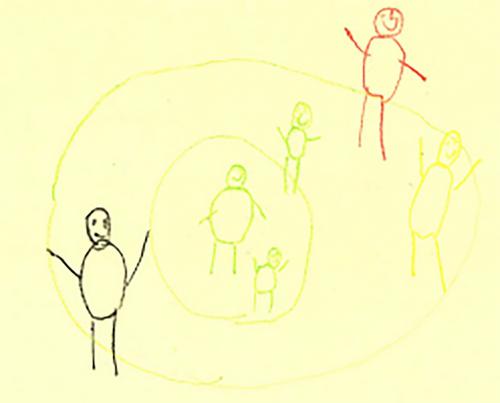Exploring concepts of friendship formation in children with language disorder using a qualitative framework analysis
Abstract
Purpose
Sociometric studies and adult reports have established that children with Language Disorder (LD) are at risk of peer relationship difficulties. However, we have limited knowledge of how children with LD understand friendship, whom they deem as a good or bad friend, and what role their friendship concepts play in their relationships with peers. This exploratory study aimed to conduct a qualitative investigation into the friendship concepts that children with LD hold and to explore their strategies for making friends.
Methods
We conducted multiple, art-informed interviews on the topic of friendship with 14 children with LD at the age of 6–8 years. Participating children were based in the United Kingdom and Republic of Ireland. They attended enhanced provision, specific speech and language classes and mainstream classrooms. We used framework analysis to map children's responses to Selman's (1979) developmental model of interpersonal understanding, which espouses a theory of children's social development within the context of peer relationships.
Results
The understanding of friendship formation in children with LD varied from physical presence to mutual support and sharing. Children's ideas about a good/bad friend represented the lowest developmental stage. Participants from the mainstream classroom demonstrated the highest stages of interpersonal understanding. Children with LD did not mention their language abilities as a barrier to making friends.
Conclusion
There are limited studies exploring friendship directly from children with LD, and this study provides insights into this gap, by utilising art-informed interviews. Children's immature understanding of a good/bad friend points towards a potential susceptibility to false friends, which we suggest needs further empirical validation. We also found that children with LD did not pay attention to their language difficulties when making friends, which raises questions about the ways diagnoses are shared with children.
WHAT THIS PAPER ADDS
What is already known on the subject
- Children with Language Disorder (LD) are at risk of peer relationship difficulties. Studies to date are based on sociometrics and adult reports. Only a few studies employ participatory approaches to research with children, directly engaging children with LD when exploring their friendships
What this paper adds
- This paper directly asks children with LD about their understanding of friendship and strategies for making friends.
- Physical proximity and play are important to children.s understanding of friendship especially in recognising good and bad friends. This indicates potential reasons for children with LD being susceptible to false friends
- Additionally, children with LD do not perceive language and communication as a barrier to making friends.
What are the potential or actual clinical implications of this work?
- Concepts around friendship and good/bad friends should be routinely assessed and targeted (if appropriate) in interventions. The study highlights the need to continue discussing practices around sharing diagnoses with children with LD.


 求助内容:
求助内容: 应助结果提醒方式:
应助结果提醒方式:


